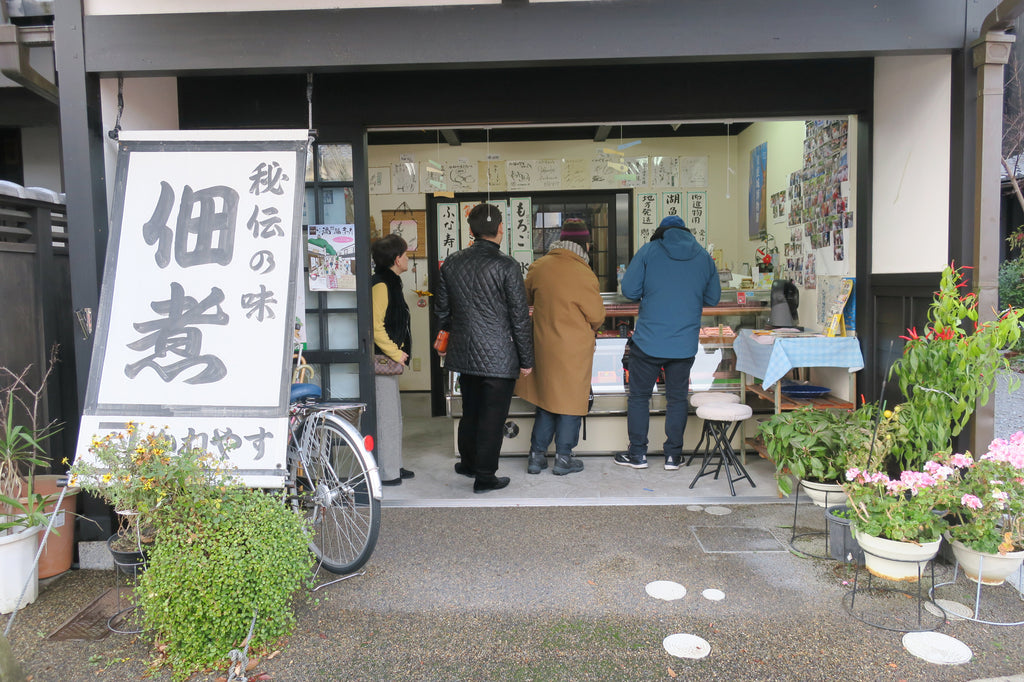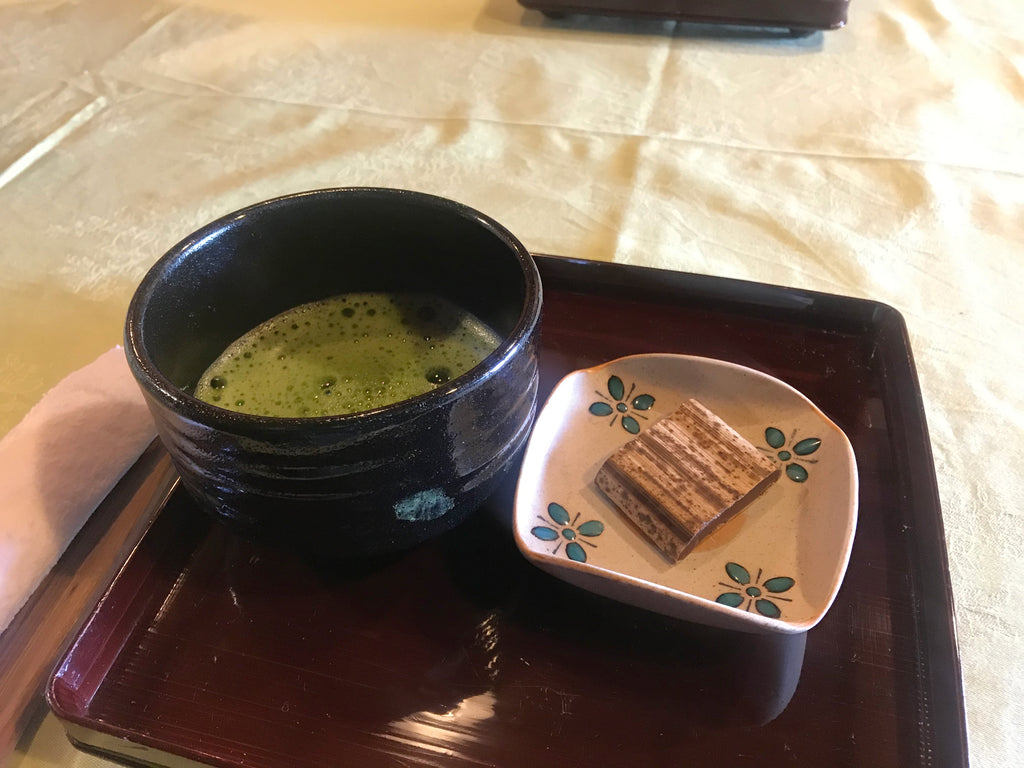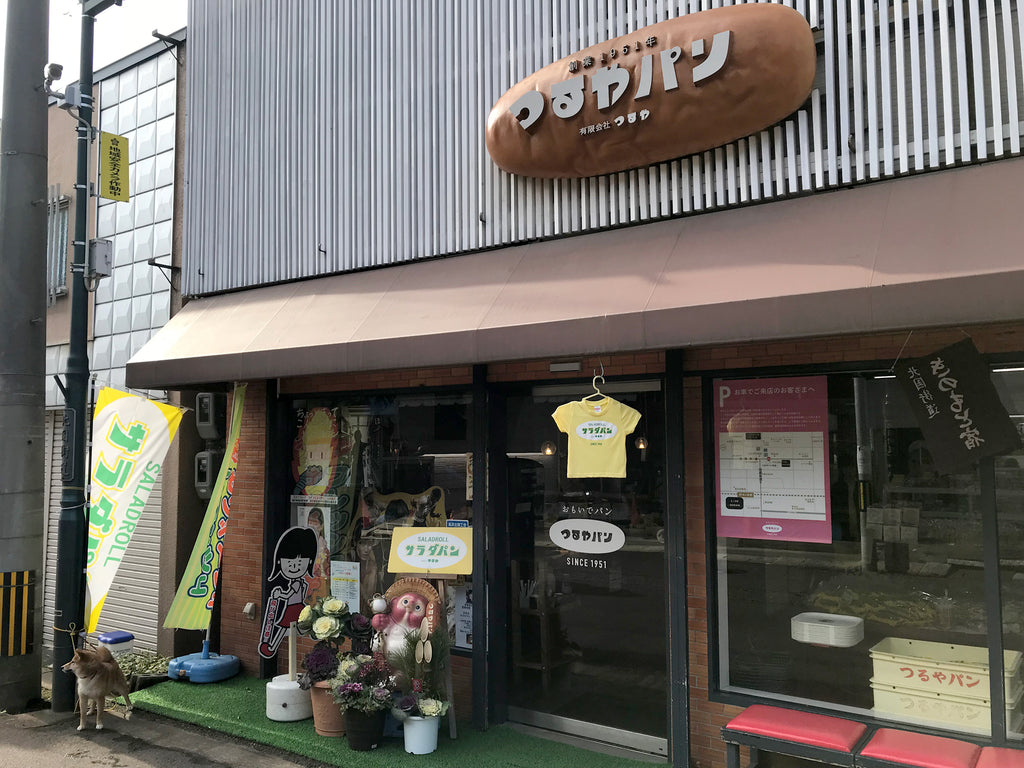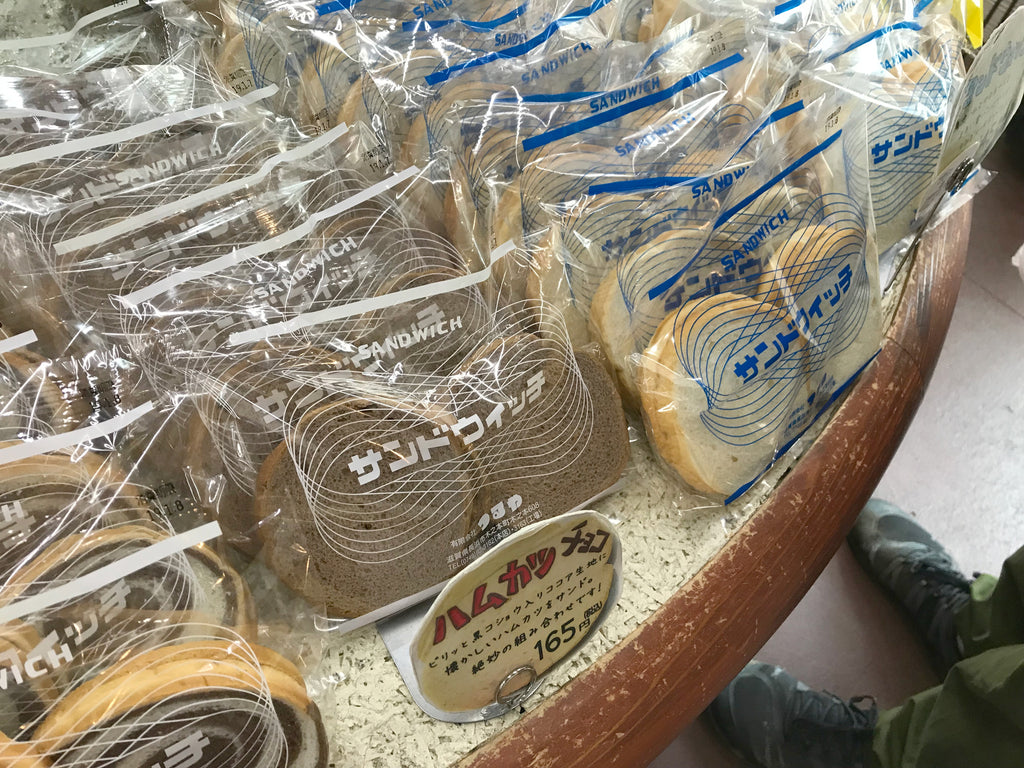
I have lived in Tokyo in the past for about 10 years of my life, but I admit my knowledge of Japanese geography is really limited. Limited not only to Tokyo proper, but more specifically to Western Tokyo, where pretty much everyone I know lives. When you live in Tokyo, it's like no other place exists, not Hokkaido, not China, not America. I imagine that's the case for many dense urban cities. So, it wasn't until I moved back to California that I started to look into more places in Japan outside of Tokyo. When we started planning our trip to Japan last year, Shiga Prefecture was one of the contenders. But when I started to ponder what I knew about Shiga (besides the few products from Shiga we carry at Umami Mart) I came up with literally zero visions.
I couldn't envision where it was, what the weather was like, or who I've met from there. And most shockingly I was drawing a complete blank when it came to their meibutsu (famous regional foods and goods).
Now I know where Shiga is:

What prompted our trip to Shiga Prefecture was an invitation from Mayuko Kita of Kirakucho Brewery to help make koji. More on our visit to Kirakucho in this post.
It was very much like Kayoko and me to take this casual invitation seriously. And before we knew it, Mayuko-san's dad (and current owner of Kirakucho Brewery) picked us up at Maibara Station (a shinkansen - bullet train - stop between Gifu and Kyoto). We were ready to find out first hand what the prefecture had to offer.
Shiga Prefecture is one of the few prefectures in Japan that doesn't border a sea. But it also has Japan's biggest lake, Lake Biwa. It stretches the length of the prefecture that sits between Gifu and Kyoto Prefectures. The lake provides sweeping views, a setting for religious sites, and much of the seafood that the people consume in the prefecture. Like most of Japan, Shiga is mountainous and its biggest mountain, Mt. Ibuki, adds to the serene landscape alongside the lake and farmlands.
The Kita family was kind enough to take us to Hikone Castle. Most castles in Japan are replicas of the original, but Hikone is one of the very few castles that still stands in its original form.

Kayoko, Kita-san and me:

Going up into the castle, you got some great views of the detail work on the roof.

As you may know, Japan loves cute characters. We found out that day that Hikonyan (the cat-samurai mascot for Hikone Castle) was famous all across Japan.
Hikonyan goods.

Japanese children seem to know him by name and hope to make the pilgramage to Hikone to see Hikonyan in person. We didn't get a very good view of him when he made the 3pm appearance.
My blurry paparazzi shot of Hikonyan:

Kayoko and I also both agreed he was actually not very charismatic. I think I'm still team Kumamon. After the Hikonyan nonsense, it was time to do what we actually came here to do – eat.
We explored the charming "main street" of Hikone Honmachi. The street is lined with original and rebuilt old-style Shiga buildings. Kita-san told us that with efforts of rebuilding little streets like these in Shiga, the prefecture hopes to get some of the tourism traffic that flocks to Kyoto. I am not a huge fan of Kyoto because of the congested streets and selfie sticks everywhere. I'll take Shiga over Kyoto for these reasons alone.
We found a charming tsukudani (morsels of seafood or vegetables simmered in soy sauce and mirin) store along the street called Kaneyasu Shoten.

We got some moroko tsukudani. Moroko, or Topmouth Gudgeon, a small fish that flourishes in nearby Lake Biwa.

A few doors down from Kaneyasu Shoten on the same side of the street, we were drawn to this plywood plastered with all kinds of tempting photos of soft serve.

You had to ring a bell so that someone would come out to the street to serve you.

I chose the limited edition anno sweet potato flavor.

It was smooth, honey, and potato like. I'd have it again!
Then Kita-san took us to Minakai a cake shop that he said he would go to when he was a child. This bakery has been here since 1954. They only had one soft serve flavor: cream. I am not a huge fan of cream-flavored things, but Kayoko approved. I loved the no-frills aspect of this Showa style bakery. Definitely worth a stop.

The next day, my partner and I continued our way up to the Kohoku region, which refers to the northern part of Shiga. We stayed in the town of Kinomoto at Gennai, a traditional ryokan (Japanese-style hotel) was situated at the base of Mt. Shizugatake.
On the way to Gennai.

This way to Gennai.

It was exactly what I needed after the hectic holiday season. It was quiet except for the streams and wild monkeys that run around on the thatched roofs.

We were welcomed with a bowl of matcha and decchi-yokan (red bean paste in bamboo leaves).

We were also greeted by this tanuki maxing and relaxing in the waiting room (more about tanuki in another post).

It was the first time I had this decchi yokan, it was dense and chewy. I like that it wasn't as sweet as some red bean paste, it seem to have a good amount of bounce (perhaps the agar agar). I did not make it to the sweets shop that sells this, but Watayo is located in Hachiman (south of Hikone). Next time I'm in Shiga, I'll make it a point to visit Watayo to get some for myself and for my friends as gifts.

After this welcome tea break, we decided to hike Mt. Shizugatake.

I admit, I wasn't ready for such a rigorous hike. At the base of the hike, it read "1.5 km." That seemed easy enough. Until I realized that it was a steep and snowy 1.5 km.

We persevered and the view was so worth it. Lake Biwa was stunning in the sunset.

What was even more worth it was the meal waiting for us at the bottom of the mountain at our ryokan.
After taking our wet socks off and getting into yukata, we were rewarded heavily. They had laid out a sukiyaki feast for us with local Omi beef.

But first some koi fish and trout sashimi from Lake Biwa. So fresh!

I am not a huge beef fan, but I will say I'm now a huge Omi beef fan. It was melt-in-your-mouth, juicy, tender, and full of umami. It was like a Gibson SG – in a class of its own.
 This pristine white chunk of beef fat is slathered over the sizzling cast iron sukiyaki pan in place of oil or butter.
This pristine white chunk of beef fat is slathered over the sizzling cast iron sukiyaki pan in place of oil or butter.
With the addition of shoyu, sugar, onions, and raw egg, I couldn't imagine a better flavor combination.

Just to top themselves, the ryokan also served us a Omi beef nigiri. This photo speaks for itself.

I was really full after all that meat, but not full enough to indulge in a heaping bowl of Omi rice. This glistening bowl of rice was so tender, yet each grain was still distinct from one another. It also had a plump sweetness and umami that didn't require any condiments. Take me back to Shiga now!

We had some local nama Shichi Hon Yari genshu. More in a post about Shichi Hon Yari later!
There were a few fruit infused shochus that caught my eye. In particular, there was one I hadn't heard of called karin-shu. I asked the inn-keeper what it was and she had trouble describing it, so I asked her if it was like an apple and she said "yes." Not sure what we were going to get, we took a chance. It turned out that karin is the Japanese word for quince. It was indeed, kind of apply and pear like. It was refreshing to have after all of that meat.

The meal was topped off with a purin (Japanese style pudding) with a burnt sugar sauce. This was in no way regional, as I've had purin this style everywhere in Japan, but it was worth mentioning since it was particularly good at Gennai. It was a sophisticated dessert that cleaned our palates. I still think about this purin.

The next morning, it was nothing short of a dream turned reality. We entered the dining room, and there was a donabe full of Omi rice waiting for us!

At the table was some housemade moroko tsukudai. The fish was small but meaty. I felt like I was getting my daily allotment of calcium to start the day right.

Our last dinner at Gennai consisted of more regional dishes worth noting.
Red Konjac appeared on a plate of appetizers. The innkeeper described to us that per Daimyo Oda Nobunaga's (1534-1582) request, this konnyaku (konjac) was created. Red was his signature color. Upon first appearance it looks like liver or konnyaku colored with red peppers. This konnyaku is actually the color red because of iron oxide. Hence the color is reminiscent of rust and looks clay-like and matte. The taste? I couldn't really tell the difference between regular and red konnyaku.
Red konnyaku pictured in the middle back.

Although many places stopped making red konnyaku after Nobunaga's reign, the trend stuck in Shiga, and the town of Hachiman is still famous for this red konnyaku.
Eel is also a big thing in Shiga and we got eel in several forms.
This is the eel spine deep fried with a sweet jelly sauce on the side. I like the layers of delicate crunchiness in this dish.

We also got eel kabayaki style. Very tender and great with rice. The seasoning was light. I appreciated it was just dusted with fine salt and not drowning in tare (sauce).

They couldn't send us home without one more taste of Omi beef. This sliced, slightly seared beef was thoughtfully placed on top of two jewel like onions.

It was time to go home the next morning. But not before stopping by Tsuruya Pan, where locals and tourists alike line up (we heard) for their salad roll. That day, we walked in without any other customers in sight.

Their famous salad roll consists of shredded daikon pickles mixed with kewpie mayo slathered in a soft roll. I forgot to take a photo of the inside. It tasted delightfully nostalgic and janky. Something that you would eat and 10 minutes later, you are hungry again.

They also sell things like fish cake sandwiches (right), which tasted like Oscar Meyer bologna and really thin ham katsu sandwiched in between chocolate bread. Loved the retro packaging!

Tsuruya Pan: making thin and puffy sandwiches since 1951.

Shiga Prefecture was so much more than I expected. The scenery, food, water, and hospitality was nourishing – I'd definitely go back to unwind again. I'm happy to know much more about this region of Japan that is both very accessible and full of stuff to explore.

Until next time! For now, it's time to catch the train!
HIKONE CASTLE
1-1 Konkicho, Hikone
Shiga Prefecture 522-0061, Japan
KANEYASU SHOTEN
2 Chome-3-12 Honmachi, Hikone
Shiga Prefecture 522-0064, Japan
MINAKAI
1 Chome-6-28 Honmachi, Hikone
Shiga Prefecture 522-0064, Japan
GENNAI RYOKAN
1529-1 Kinomotocho Ooto, Nagahama
Shiga Prefecture 529-0431, Japan
TSURUYA PAN
1105 Kinomotocho Kinomoto, Nagahama
Shiga Prefecture 529-0425, Japan




Comments (2)
Thanks for the wonderful travelogue and the great pictures. I particularly enjoyed the description of interesting foods.
All the food looks amazing! I’m really intrigued by that choco-katsu pan. It doesn’t seem like it would go together…
Beautiful sunset, too!